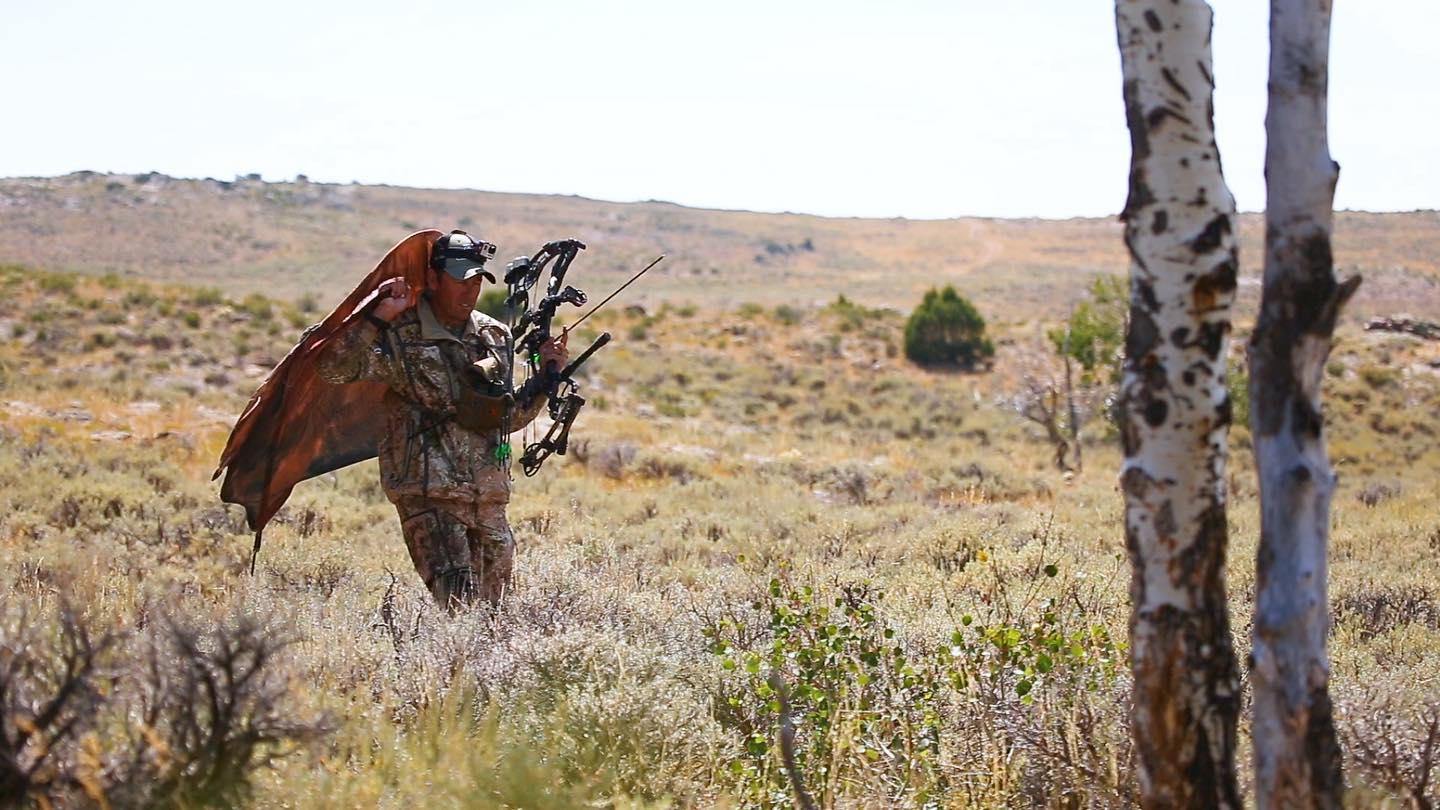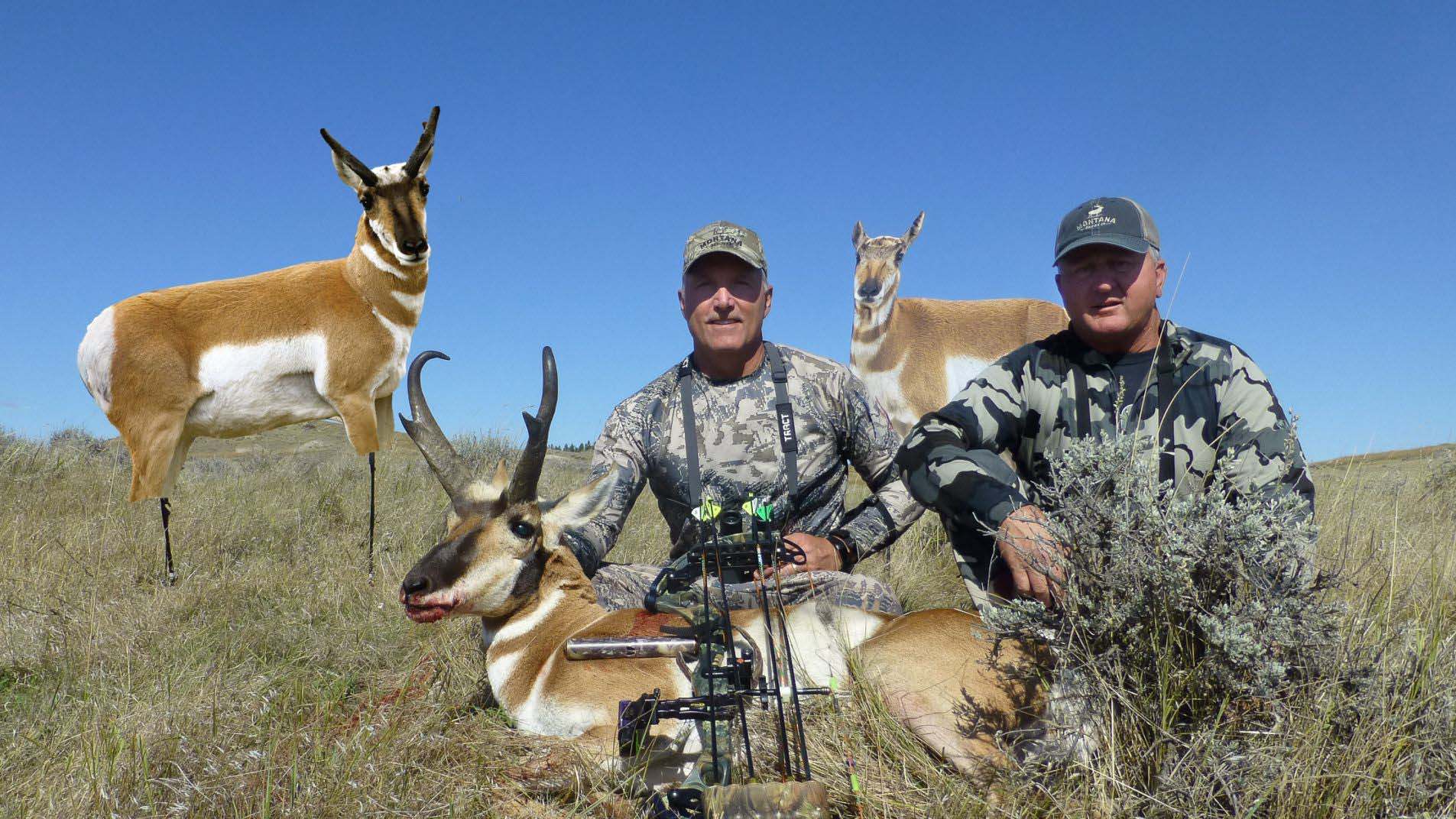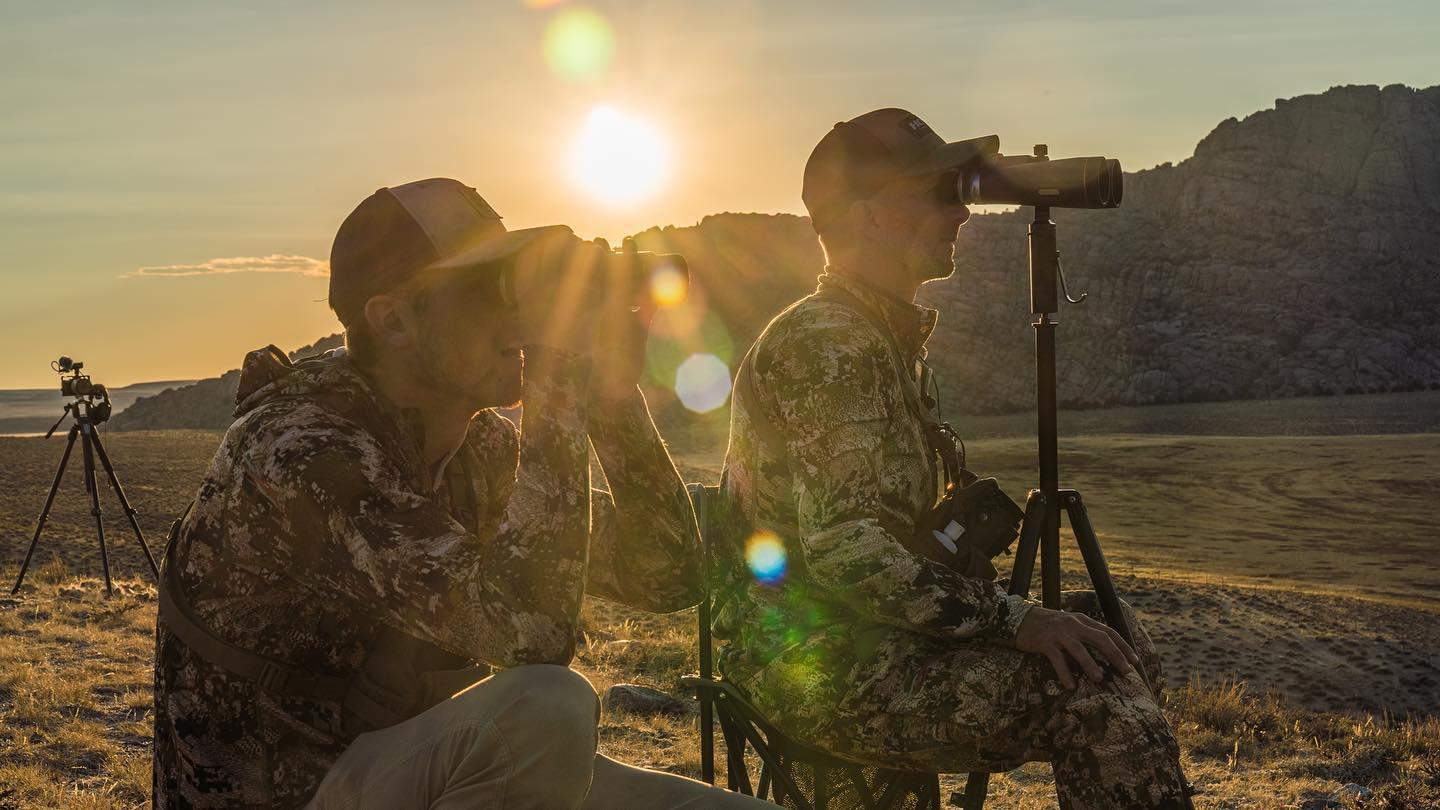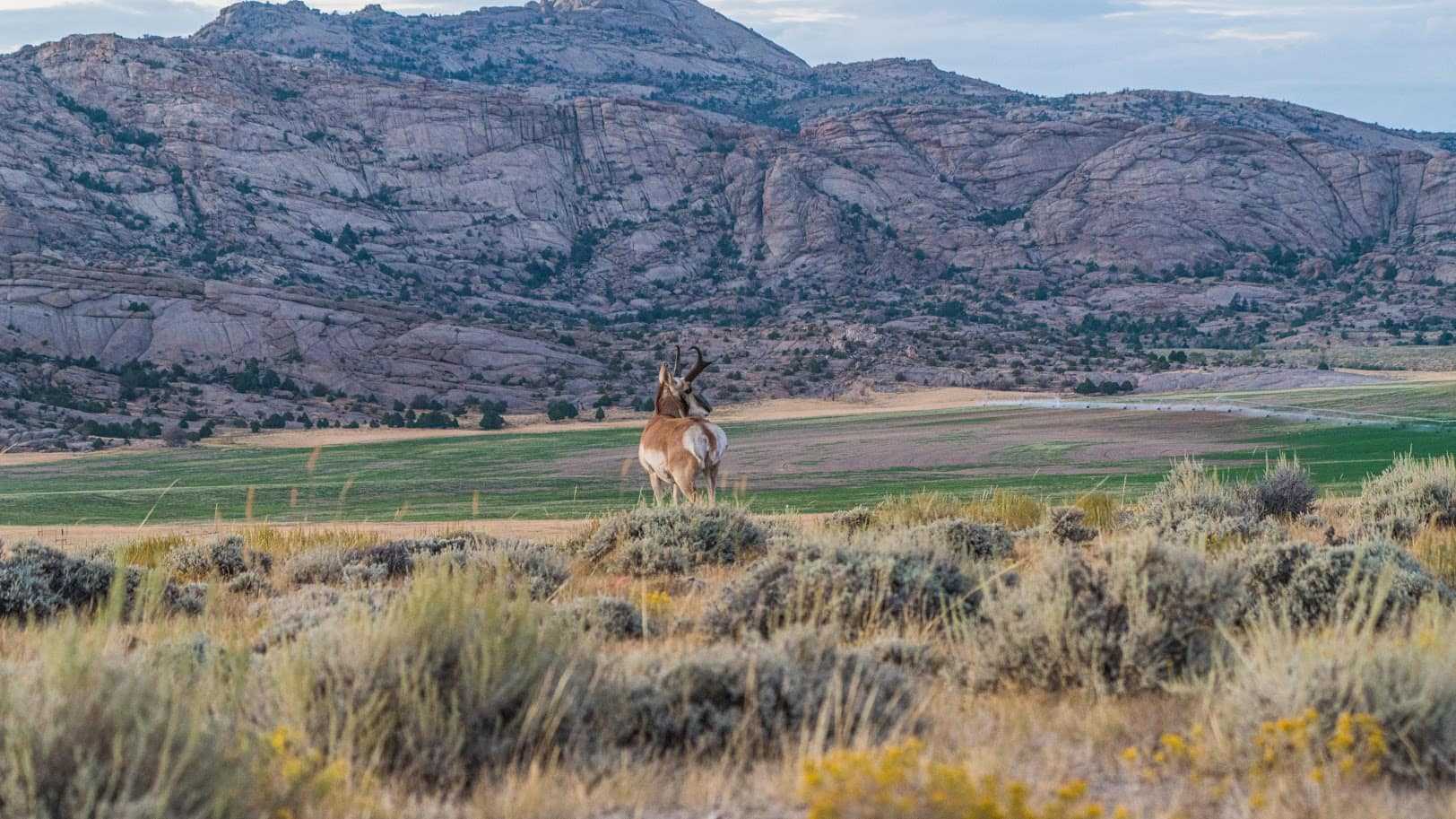Posted by Jerry McPherson on Jul 14, 2022
5 Ideal Antelope Hunting Setups
Antelope hunting is so fun. However, success statistics can be misleading. While kill percentages often linger into the 90% range, it’s still far from a guaranteed hunt. Mastering proper hunting techniques is critical in filling your tag. Using the right setup will help move the odds in your favor. Check out these five antelope hunting setups to get more horns in hand.
Early Season Antelope Hunting
The earliest part of antelope seasons is almost always hot. Most states begin their first bow season around the middle of August when the summer mercury shows no mercy. Hydration is a premium asset in the drier habitats where antelope live.
While sitting in a ground blind near a watering hole isn’t always the most exciting form of hunting, it can be extremely productive for hunters with enough patience. Find one that has an abundance of fresh tracks and droppings. Learn the prevailing winds in your hunting area and put your blind on the downwind side of water. While smell isn’t an antelope’s primary source of defense, it can certainly be a factor as they come into bow range.
 When all else fails, taking an aggressive approach with a stalking shield can help you get in a better position.
When all else fails, taking an aggressive approach with a stalking shield can help you get in a better position.
Antelope can be very wary approaching a watering hole. If you find a water source where antelope funnel through a chokepoint, like a downed fence line, consider setting up along their route of passage where they’re more relaxed instead of sitting right on the water source itself.
Pro Tip: Setup your blind a few days before you plan to hunt so they get used to the sight.
Pre-Rut
During the pre-rut a few does are beginning to come into estrus. And it doesn’t take much to trigger anxious bucks who are preparing to stake out territory and build harems. While the need for water certainly doesn’t diminish and the previous tactic is still effective, hunters can also use love to their advantage.
Scouting and a little local knowledge can be very useful during the pre-rut. The prospect of does coming in estrus will cause bucks to begin ranging near and far to try to find does that are coming into an early cycle. They will also begin to mark their territory with scrapes and fresh droppings.
Locate areas with active scrapes and place a blind near a chokepoint. Gullies are frequently traveled during later seasons, but during the pre-rut bucks will travel higher on ridges and hills so they can spot other bucks attempting to move in on their harem.
Find where bucks are consistently traveling. Place the Antelope Buck & Doe combo at the threshold where they will definitely be seen and give you a good shot should a buck commit. This is when the waiting game begins and the use of extraordinary patience is key to success.
 Using the Antelope Buck & Doe Combo can help you create an ideal antelope hunting setup throughout the season.
Using the Antelope Buck & Doe Combo can help you create an ideal antelope hunting setup throughout the season.
Pro Tip: Don’t be discouraged if you don’t see antelope around. If you find active sign, their wide-ranging behaviors during this season will bring them to that area again. If possible, place the decoys where they can be seen from long distances for those wide-ranging bucks who are out cruising.
Peak Rut
Peak rut antelope hunting is one of the most intense and exciting times of any hunting season. That being common knowledge, it can also be one of the busier times for both bow and muzzleloader hunters. Most archery hunters save both their tags and vacation time for this late-September part of the season – one more nod for the potential effectiveness of the Early Season and Pre-Rut tactics.
 Lots of scouting and some local knowledge can go a long way in finding pronghorn to set up on.
Lots of scouting and some local knowledge can go a long way in finding pronghorn to set up on.
For those hunters that want to experience the rut in full force, the peak rut is prime time for using a decoy. While using a decoy like a shield on a stalk can be effective, it’s a high-risk option that can also spook a desired buck.
As an alternative, observe a herd of pronghorn from afar and wait for them to move into an area that has enough terrain and vegetation to attempt a stalk. Sneak in close – ideally within 100 yards – and stake a buck decoy in view of the herd. That distance should be enough of a threat for the dominant buck to charge into range looking for a fight.
Pro Tip: Use the buck and doe combo to simulate a doe that has slipped away from the herd and a buck that is trying to woo her away.
Late-Rut
As the rut progresses into rifle season, more and more does are bred and lose interest in bucks. As long as bucks can still locate the scent of does in estrus, their switch stays on. Though with fewer available suitors.
This is the perfect time to utilize a doe decoy. As bucks grow more and more desperate to prolong the mating season, does become the lure of choice – especially for younger bucks that have consistently tried and failed to develop their own harem.
Note: Only use a decoy during the rifle season if you are hunting on private land. Even then, do not set up near the decoy. Wear hunter orange.
Glass solitary bucks from afar and try to stalk within range. Then deploy the doe decoy to help coerce him close the distance. Again, be very careful however if hunting during rifle season. Be sure to wear hunter orange and hunt only private land. Also place orange flagging tape on the backside of your decoy.
Pro Tip: Use two doe decoys instead of one to provide more visibility at longer ranges.
Post-Rut
While the rut is not completely over, aggressive antelope behavior mostly ends. This is the time of year that the spot and stalk method really shines. Especially since it’s rifle season and gives you more range.
Hunt larger open areas where you can see a long distance. Let your optics (binoculars and spotting scopes) do the work until you find a buck. Don’t overlook smaller segments of land. By the start of rifle season, antelope become significantly more sensitive to hunting pressure and will gradually move to areas of lighter pressure. In many cases those sanctuaries are on private land or public land that borders private land.
 Antelope hunting can be fun, rewarding, and a chance to visit some of the West's most incredible landscapes.
Antelope hunting can be fun, rewarding, and a chance to visit some of the West's most incredible landscapes.
Hunting private/public land borders can be very effective. While trespassing is obviously illegal, glassing private land is not. Glass private land bordering public land and determine which way antelope are moving. Then beat them to the spot and set up where they cross on to public.
Pro Tip: Rather than solely driving roads, map high points that are close to the road and walk short distances to better vantage points.
Having the right setup can make all the difference. And doing a little homework can help move the odds in your favor. While success numbers during antelope season are often high, it still takes a little grit and planning to find yourself on the right side of the statistic.
